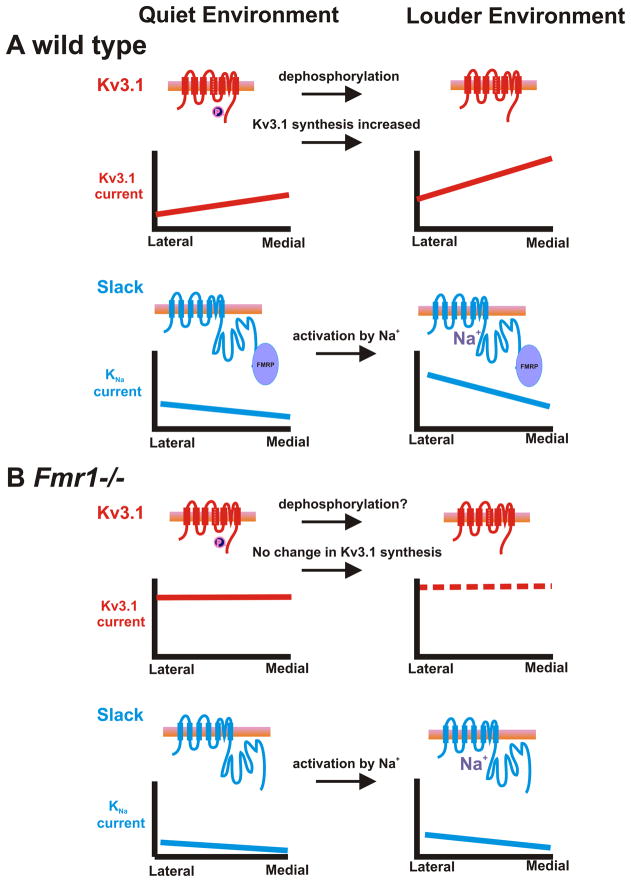Fig. 6.
An overview of how FMRP is likely to regulate both Kv3.1 and Slack currents in the MNTB in quiet vs loud environments. (A) In wild type mice moving from a quiet to loud environment, Kv3.1 becomes dephosphorylated and there is an increase in the synthesis of Kv3.1 channels. Both of these events lead to an overall increase in Kv3.1 currents across the tonotopic gradient. The increased synthesis of Kv3.1 believed to occur through FMRP loss of repression Kv3.1 mRNA. Additionally, FMRP binds to Slack channels and activates Slack currents when there is rise in intracellular sodium. (B) In contrast, in Fmr1−/− mice, Kv3.1 levels are high and do not differ along the tonotopic gradient and there is a decrease in Slack currents in the MNTB. Auditory stimulation fails to increase synthesis of Kv3.1 channels. Although the phosphorylation of Kv3.1 in Fmr1−/− animals has not been studied, there is no a priori reason to believe that it differs in such animals. Thus neurons from Fmr1−/− animal are expected to be capable of firing at higher rates than those from wild type animals and with reduced temporal accuracy.

